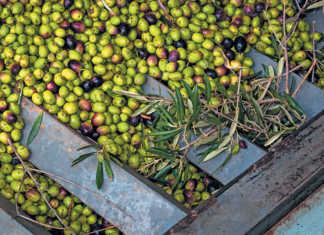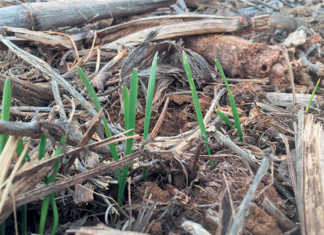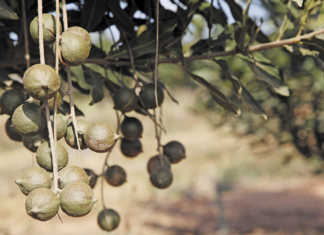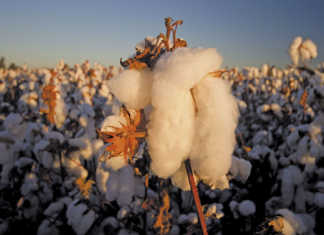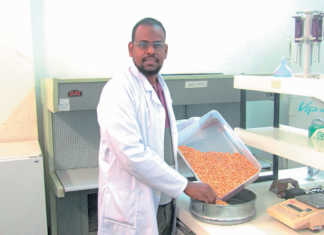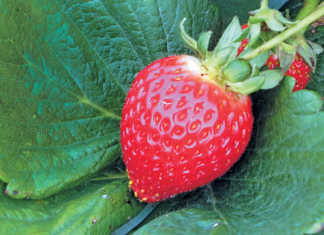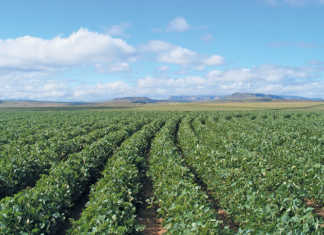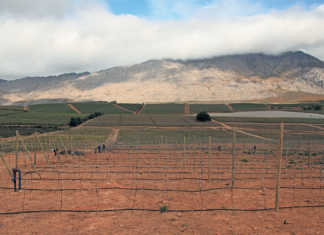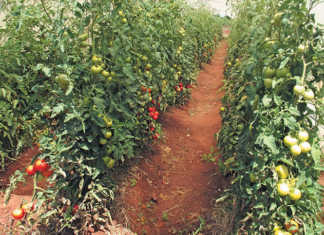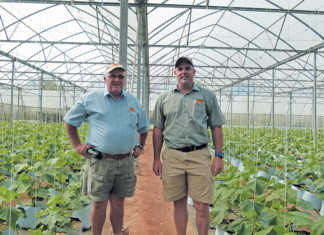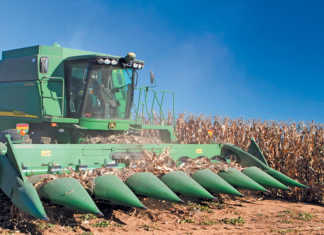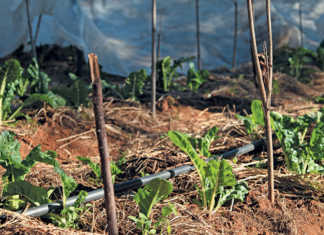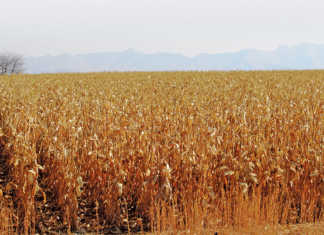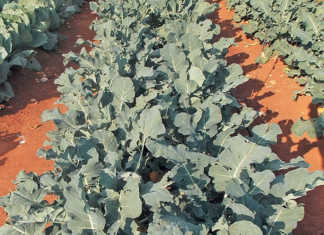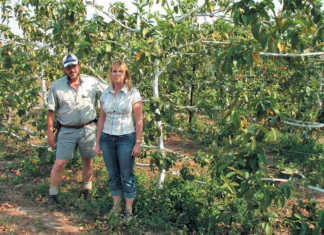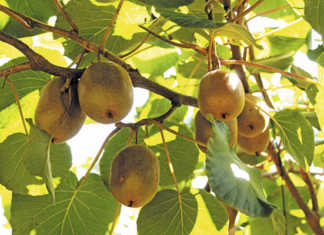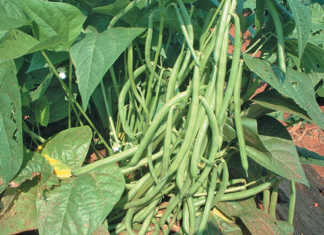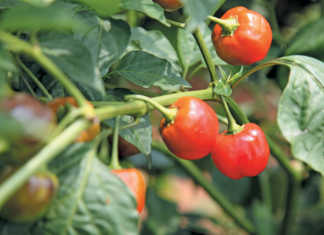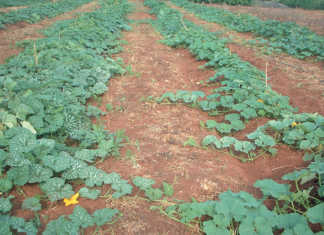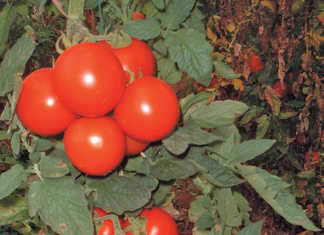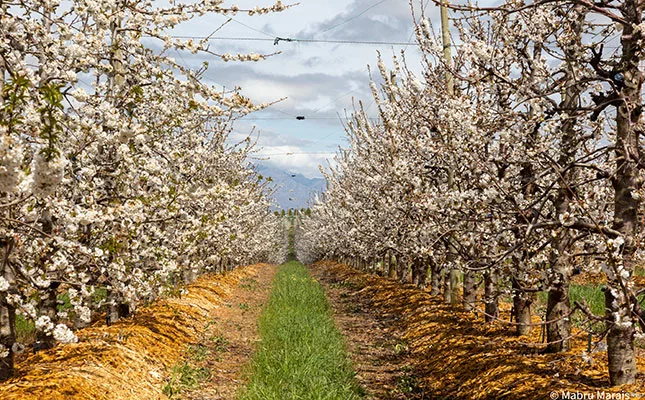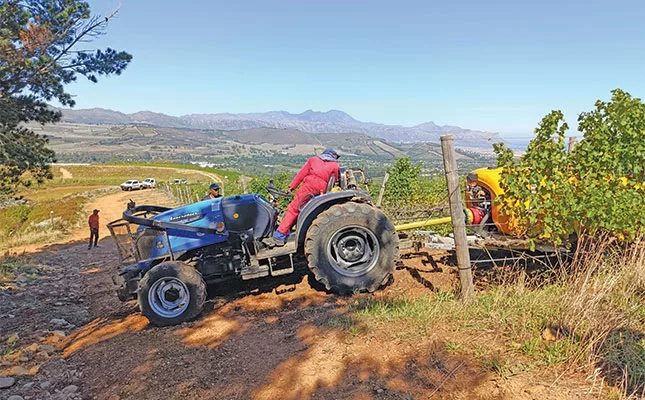Olive oil success through innovation
The Greenleaf Olive Company near Cape Agulhas in the Overberg planted its first trees in 2006. Just 10 years later, the olive oil produced here is one of South Africa’s...
Using no-till practices for long-term sustainability
Grain producer, Danie Slabbert, wants to manage soil sustainably so that it remains productive for future generations. Annelie Coleman visited him on his farm in the Free State to learn...
Macadamias: a growing industry, but challenges await
South Africa’s macadamia industry is expected to double production over the next few years. But processors will have to find new markets and add value to nuts to maintain exports,...
Cotton gains ground with up-to-date harvesting tech
Sabrina Dean spoke to Deon Marais, combine harvester operator, and Richard Godfrey-Thom, a cotton farmer in the Vaalharts region of the Northern Cape, about the innovative cotton picker revolutionising and...
SA scientist’s maize weevil control breakthrough
Protecting stored grain from insect pests is essential for Africa’s future food security. University of KwaZulu-Natal doctoral candidate, Mohamed Saeed, describes his successful tests with a widely known fungus to...
Strawberries: overcoming the stumbling blocks
Strawberry production in South Africa is expensive, with exhorbitant set-up costs. The market is also very competitive. Mark Miller, operations manager at Redberry Strawberry Farm in George, spoke to Jay...
The benefits of soya bean production in South Africa
Gerhard Scholtemeijer, Protein Research Foundation chairperson, is an ardent advocate for soya bean production in South Africa, and has promoted the crop for the past 20 years. He spoke to...
Ceres farmer achieves best-ever harvest, despite drought
Despite extremely dry conditions, Ceres Valley farmer, Retief du Toit, recently succeeded in producing his two best harvests ever. He spoke to Glenneis Kriel about how he achieved this.
Do your homework before starting tomato production
Producing tomatoes is expensive and can make or break a farmer. If you plan to grow this crop, first do your homework and investigate its economic viability.
Cucumber farming: volume and quality trump shrinking margins
Over the past 15 years, Alan and Russell Heger have grown their farming operation into a major supplier of cucumbers in the Eastern Cape. Grant Hollins spoke to this father-and-son...
Free State Young farmer intends farming into the future
Free State Young Farmer of the Year 2017, Johan van Huyssteen, is working to ensure the sustainable productivity of his family farm for future generations.
Small land, big dreams for urban veggie farmer
Clement Tshuma believes his small-scale vegetable operation near Kempton Park in Gauteng, not only ensures the sustainability of his own future, but a similar model could be the answer to...
Expert tips on producing better silage
Grant Pringle, an agronomist with Pannar Seed, tells Lloyd Phillips how a farmer can get the best out of a silage maize crop by using the correct planting and management...
How to fertilise a crop correctly
Readers frequently ask me for specific fertiliser programmes for their crops. I would happily oblige if all crops were the same!
New cultivars & production methods for guava industry
The Western Cape Department of Agriculture is funding research to stimulate and sustain the growth and development of minor crops in the province, a move that promises to transform the...
Grabbing hold of the golden kiwifruit export market
Golden kiwifruit is in high demand in Europe and Asia. New Zealand is currently the largest producer and exporter of the fruit in the southern hemisphere, but South Africa is...
Over-stimulating vegetative growth
The survival mechanisms that enabled the ancestors of modern crops to survive in the wild will influence the efficacy of the fertiliser we apply to these crops today.
Success with sweet piquanté peppers
Sweet piquanté peppers, marketed under the PEPPADEW label, require all the attention a farmer can spare to produce good results. Limpopo farmer, Jaco Kriel, spoke to Gerhard Uys about producing...
Spacing, competition & yield
We sometimes tend to make assumptions about how a crop will react without considering the survival mechanisms inherited from its wild ancestors.
Leafy crop vs fruiting crop the balancing act
When trying to predict how a crop will respond to various situations, remember that all cultivated crops originated from wild ancestors growing in competition with many other species.
ADVERTISEMENT
MUST READS
ADVERTISEMENT
ADVERTISEMENT

